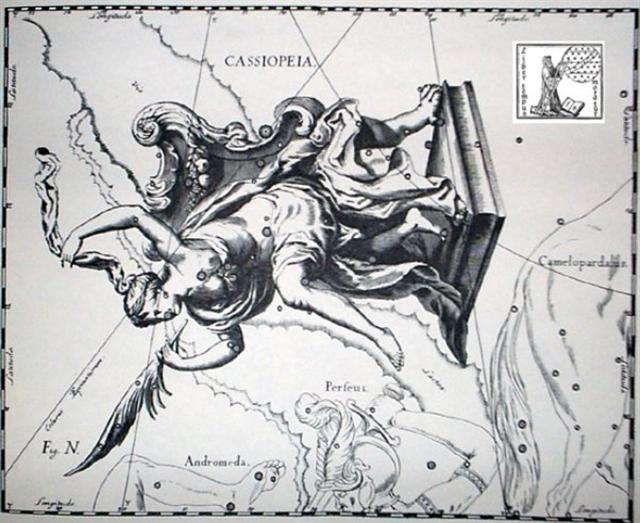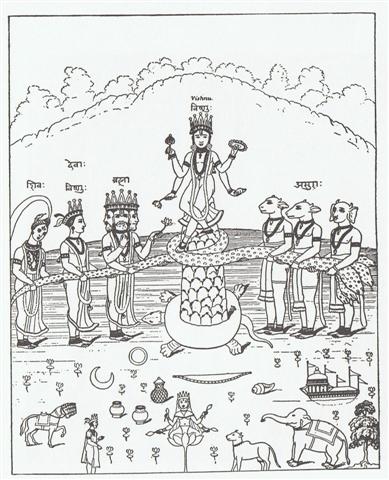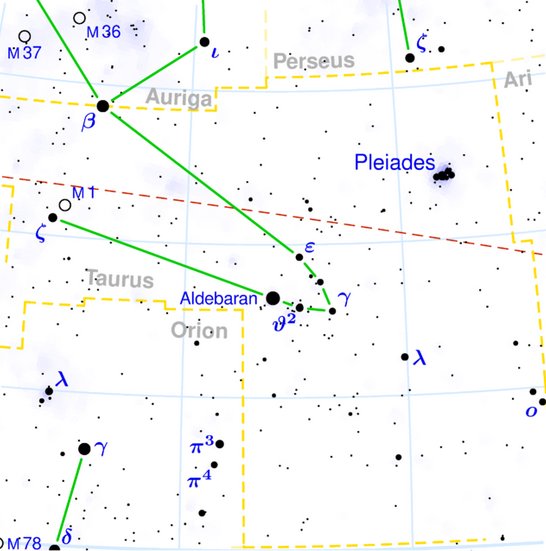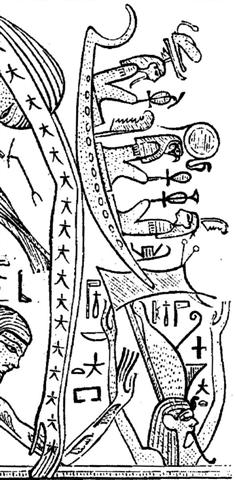Bb8.4 On Hawaii they looked for the return of the Pleiades in the night sky of November. This was at the opposite side of the sky compared to where Antares rose in the east:
When in May the rays from the 'bright fire' (Sun) made it impossible to observe the Pleiades it was though possible to instead look in the opposite direction and perceive the Serpent Holder (Ophiuchus) close to the Full Moon, at the place corresponding to November (= 6 months after May).
In November 18 (322, *242) the star at the Breast of Cassiopeia (Schedir) culminated at 21h,
and this was 322 - 136 = 186 (→ 6 * 31) days after Alcyone. *56 + *186 = *242 (→ twice 121 → number of glyphs on side b of the G tablet): ... Strassmeier and Epping, in their Astronomishes aus Babylon, say that there its stars formed the third of the twenty-eight ecliptic constellations, - Arku-sha-rishu-ku, literally the Back of the Head of Ku, - which had been established along that great circle milleniums before our era; and Lenormant quotes, as an individual title from cuneiform inscriptions, Dil-kar, the Proclaimer of Dawn, that Jensen reads As-kar, and others Dil-gan, the Messenger of Light. George Smith inferred from the tablets that it might be the Star of the Flocks; while other Euphratean names have been Lu-lim, or Lu-nit, the Ram's Eye; and Si-mal or Si-mul, the Horn star, which came down even to late astrology as the Ram's Horn. It also was Anuv, and had its constellation's titles I-ku and I-ku-u, - by abbreviation Ku, - the Prince, or the Leading One, the Ram that led the heavenly flock, some of íts titles at a different date being applied to Capella of Auriga. Brown associates it with Aloros, the first of the ten mythical kings of Akkad anterior to the Deluge, the duration of whose reigns proportionately coincided with the distances apart of the ten chief ecliptic stars beginning with Hamal, and he deduces from this kingly title the Assyrian Ailuv, and hence the Hebrew Ayil; the other stars corresponding to the other mythical kings being Alcyone, Aldebaran, Pollux, Regulus, Spica, Antares, Algenib, Deneb Algedi, and Scheat ...
On Hawaii they counted with November18 as the day when in the evening the Pleiades ought to return to visibility. ... The correspondence between the winter solstice and the kali'i rite of the Makahiki is arrived at as follows: ideally, the second ceremony of 'breaking the coconut', when the priests assemble at the temple to spot the rising of the Pleiades, coincides with the full moon (Hua tapu) of the twelfth lunar month (Welehu). In the latter eighteenth century, the Pleiades appear at sunset on 18 November. Ten days later (28 November), the Lono effigy sets off on its circuit, which lasts twenty-three days, thus bringing the god back for the climactic battle with the king on 21 December, the solstice (= Hawaiian 16 Makali'i). The correspondence is 'ideal' and only rarely achieved, since it depends on the coincidence of the full moon and the crepuscular rising of the Pleiades ... From there they counted towards the December solstice:
The funnel-shaped net (hura) of Metoro could here have referred the origin of the outline of the horns of Taurus, ... A sidelight falls upon the notions connected with the stag by Horapollo's statement concerning the Egyptian writing of 'A long space of time: A Stag's horns grow out each year. A picture of them means a long space of time.' Chairemon (hieroglyph no. 15, quoted by Tzetzes) made it shorter: 'eniautos: elaphos'. Louis Keimer, stressing the absence of stags in Egypt, pointed to the Oryx (Capra Nubiana) as the appropriate 'ersatz', whose head was, indeed, used for writing the word rnp = year, eventually in 'the Lord of the Year', a well-known title of Ptah. Rare as this modus of writing the word seems to have been - the Wörterbuch der Aegyptischen Sprache (eds. Erman and Grapow), vol. 2, pp. 429-33, does not even mention this variant - it is worth considering (as in every subject dealt with by Keimer), the more so as Chairemon continues his list by offering as number 16: 'eniautos: phoinix', i.e., a different span of time, the much-discussed 'Phoenix-period' (ca. 500 years) ... located at MARCH 19 (78) and hence fully visible close to the Full Moon late in November.
Tradition also certified there was a net at dawn: ... The 'living god', moreover, passes the night prior to the dismemberment of Lono in a temporary house called 'the net house of Kahoali'i', set up before the temple structure where the image sleeps. In the myth pertinent to these rites, the trickster hero - whose father has the same name (Kuuka'ohi'alaki) as the Kuu-image of the temple - uses a certain 'net of Maoloha' to encircle a house, entrapping the goddess Haumea; whereas, Haumea (or Papa) is also a version of La'ila'i, the archetypal fertile woman, and the net used to entangle her had belonged to one Makali'i, 'Pleiades'. Just so, the succeeding Makahiki ceremony, following upon the putting away of the god, is called 'the net of Maoloha', and represents the gains in fertility accruing to the people from the victory over Lono. A large, loose-mesh net, filled with all kinds of food, is shaken at a priest's command. Fallen to earth, and to man's lot, the food is the augury of the coming year. The fertility of nature thus taken by humanity, a tribute-canoe of offerings to Lono is set adrift for Kahiki, homeland of the gods. The New Year draws to a close. At the next full moon, a man (a tabu transgressor) will be caught by Kahoali'i and sacrificed. Soon after the houses and standing images of the temple will be rebuilt: consecrated - with more human sacrifices - to the rites of Kuu and the projects of the king ...
|
||||||||||||||||||||||||||||||||||||||||||||||||||||||||||||||||||||||||||||||||||||||||||||||||||||||||||||||||||||||||||||












